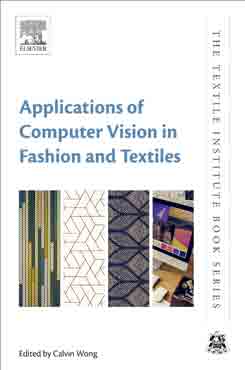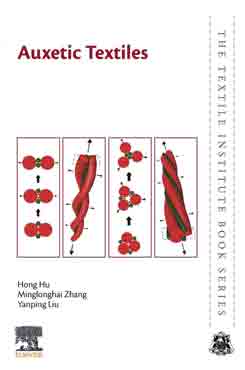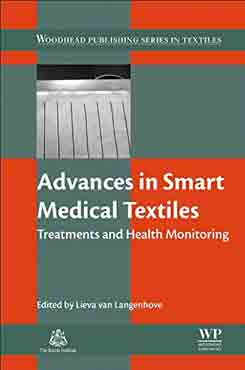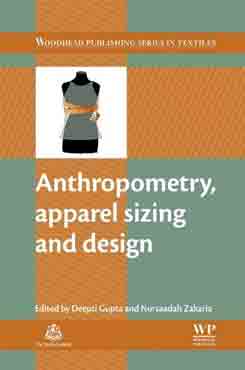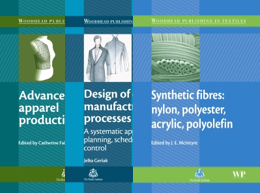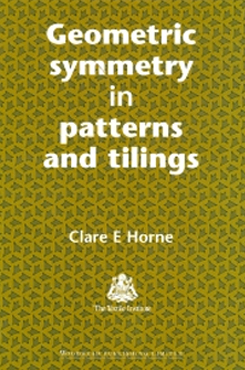Description
**2025 PROSE Award Category Winner in Engineering and Technology**
Sustainable Innovations in the Textile Industry addresses advances taking place at every stage of the textile value chain that are leading to improvements in sustainability and resource efficiency. It contains comprehensive coverage of the complete textile process sequence, including fiber to textile manufacture and wet processing techniques, such as dyeing, printing, finishing, coating and cleaning. In addition, it also provides the latest industry knowledge on technological advances in textile machinery, supply chain, recycling, effluent discharge, and other innovations that enhance sustainability. This holistic approach is required to effectively address the sustainability issue, which requires action across the value chain.
Having included historical aspects of sustainability in textiles as well as the state of the art in innovative fibers, chemicals and manufacturing processes, this book is essential reading for anyone interested in sustainable directions in the textile industry.
Contents
-
1. Sustainable innovations in textiles
-
1.1. Introduction
-
1.2. Innovations in textile manufacture
-
1.3. Sustainability of textile processing
-
1.4. Postproduction sustainability and circularity
-
1.5. Conclusion
-
2. Production and processing of natural fibres
-
2.1. Introduction
-
2.2. Historical aspects and current scenario
-
2.3. Sustainable production of natural cellulosic fibres
-
2.4. Sustainable production of protein fibres
-
2.5. Future perspectives
-
2.6. Conclusion
-
3. Innovations in man-made and synthetic fibres
-
3.1. Introduction
-
3.2. Historical aspects and current scenario
-
3.3. Impacts of fibres on health and environment
-
3.4. Renewable carbon approach in fibre industry
-
3.5. Innovations leading to sustainability, energy and resource efficiency
-
3.6. Future perspectives
-
3.7. Conclusion
-
4. Innovations in spinning processes and machinery
-
4.1. Introduction
-
4.2. Historical aspects and current scenario
-
4.3. Sustainable innovations in spinning processes
-
4.4. Sustainable innovations in spinning systems
-
4.5. Reduction in waste generation
-
4.6. Process automation and optimisation
-
4.7. Future perspectives
-
4.8. Conclusion
-
5. Innovations in weaving, knitting and nonwoven machinery
-
5.1. Introduction
-
5.2. Historical aspects and current scenario
-
5.3. Innovations leading to sustainability, energy and resource efficiency
-
5.4. Environmental awareness and future perspectives
-
5.5. Conclusion
-
6. Innovations in woven textiles
-
6.1. Introduction
-
6.2. Historical aspects and current scenario
-
6.3. Sustainability analysis of woven textiles
-
6.4. Innovations leading to sustainability in woven textiles
-
6.5. Future perspectives
-
6.6. Conclusion
-
7. Innovations in knitted textiles
-
7.1. Introduction
-
7.2. Historical aspects and current scenario
-
7.3. Sustainable raw materials for knitted fabrics
-
7.4. Sustainability aspects of product development
-
7.5. Knitting challenges and digital solutions
-
7.6. Circularity of knitted garments
-
7.7. Future perspectives
-
7.8. Conclusion
-
8. Innovations in nonwoven textiles
-
8.1. Introduction
-
8.2. Historical aspects and current scenario
-
8.3. Selection of sustainable fibres
-
8.4. Innovations leading to sustainable nonwoven products
-
8.5. Future perspectives
-
8.6. Conclusion
-
9. Innovations in dyes and chemoinformatics approach
-
9.1. Introduction
-
9.2. Historical aspects
-
9.3. Impacts of dyes on health and the environment
-
9.4. Sustainable innovations in dyes
-
9.5. Chemoinformatics approach for sustainable innovations
-
9.6. Future perspectives
-
9.7. Conclusion
-
10. Speciality chemicals, enzymes and finishes
-
10.1. Introduction
-
10.2. Historical aspects and current scenario
-
10.3. Impacts on health and the environment
-
10.4. Innovations leading to sustainable textile processes
-
10.5. Environmental awareness and future perspectives
-
10.6. Conclusion
-
11. Innovations in textile wet processing machinery
-
11.1. Introduction
-
11.2. Historical aspects and current scenario
-
11.3. Innovations in wet processing machinery
-
11.4. Innovations leading to sustainability and energy efficiency
-
11.5. Future perspectives
-
11.6. Conclusion
-
12. Innovations in textile pretreatments
-
12.1. Introduction
-
12.2. Historical aspects of pretreatments
-
12.3. Textile wet processing and pollution
-
12.4. Impacts on health and environment
-
12.5. Sustainable innovations in textile pretreatments
-
12.6. Environmental awareness and future perspectives
-
12.7. Conclusion
-
13. Dyeing, printing and digital colouration
-
13.1. Introduction
-
13.2. Historical aspects and current scenario
-
13.3. Circular economy in textiles
-
13.4. Innovations leading to sustainability and resource efficiency
-
13.5. Environmental awareness and future perspectives
-
13.6. Conclusion
-
14. Functional finishing and smart coating
-
14.1. Introduction
-
14.2. Historical aspects and current scenario
-
14.3. Sustainable innovations in functional finishes
-
14.4. Smart coating based on anchor peptides
-
14.5. Future trends
-
14.6. Conclusion
-
15. Garment machinery for regenerative manufacturing
-
15.1. Introduction
-
15.2. Historical pivot points for the fashion industry
-
15.3. Circular economy and regenerative clothing production
-
15.4. Sustainable innovations in garment manufacturing
-
15.5. Future perspectives
-
15.6. Conclusion
-
16. Sustainable textile care and maintenance
-
16.1. Introduction
-
16.2. Historical aspects and current scenario
-
16.3. Impacts on health and hygiene
-
16.4. Environmental impacts of washing
-
16.5. Innovations leading to sustainability and energy efficiency
-
16.6. Future perspectives
-
16.7. Conclusion
-
17. Sustainable supply chain and logistics of fashion business
-
17.1. Introduction
-
17.2. Historical aspects and current scenario
-
17.3. Supply chain of fashion business
-
17.4. Reverse supply chain
-
17.5. Closed-loop supply chain
-
17.6. Sustainable innovations in supply chain
-
17.7. Future perspectives
-
17.8. Conclusion
-
18. Closed-loop postconsumer textile recycling
-
18.1. Introduction
-
18.2. Historical aspects and current scenario
-
18.3. Circular textile economy
-
18.4. Sustainable innovations leading to resource efficiency
-
18.5. Ecological and socioeconomic impacts of recycling
-
18.6. Future perspectives
-
18.7. Conclusion
-
19. Textile effluent treatment and recycling
-
19.1. Introduction
-
19.2. Historical aspects and current scenario
-
19.3. Environmental impacts of textile effluents
-
19.4. Innovations in wastewater treatment plants
-
19.5. Sustainable innovations leading to energy and resource efficiency
-
19.6. Socioeconomic awareness and future perspectives
-
19.7. Conclusion
-
20. Sustainability aspects, LCA and ecolabels
-
20.1. Introduction
-
20.2. Historical aspects and current scenario
-
20.3. Pillars of sustainability
-
20.4. Impacts of textile industry on health and environment
-
20.5. Sustainable innovations and circular economy in textiles
-
20.6. Life cycle assessment
-
20.7. Ecolabels
-
20.8. Future perspectives
-
20.9. Conclusion
